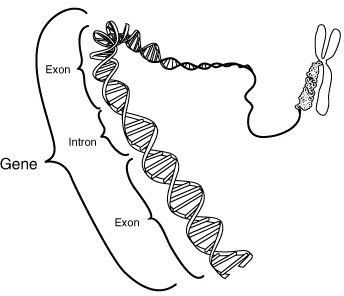Basic Genetics FAQ: Information for a Basic Understanding of Genetics
Basic Understanding of Genetics
Understanding recent developments in genetics requires knowing the basics. This article is an excellent accompaniment to Bright Hub’s Human Genetics FAQ.
What is DNA Replication?
Deoxyribonucleic acid (DNA) is the molecule that contains most of the genetic information of an organism. It consists of billions of chemical bases, that form thousands of genes inside a super compact structure. DNA replication is the fundamental biological process where DNA is copied, and it occurs in all living organisms. It involves many enzymes (helicases, DNA polymerase) that unwind the double helix DNA structure (creating a single strand template) and copy the exact original (parent) DNA structure. DNA has to replicate to provide constancy of genetic information as new cells are produced. These cells would not be able to function without a full complement of genes. DNA replication occurs prior to cell division.
Crick and Watson’s model of the structure of DNA, which was published in 1953, served as a model to explain how DNA replicates.
What is Transcription?
There is a central idea in genetics and molecular biology that is still holding, and it’s that each gene within DNA codes for one specific protein with a specific function within the cell. The journey from gene to protein is not a one-step process. It involves an “in-between” step called transcription. By definition, transcription is the process by which the DNA information is copied into another important genetic molecule (ribonucleic acid or RNA). Why this middle step? The DNA, which contains the information to be decoded is located in the nucleus of the cell while the protein assembling machinery is located outside the nucleus, in the cytoplasm. The RNA is the “messenger” that delivers the DNA information to the protein assembling machinery.
What is Translation?
The actual process of converting the gene information into a protein molecule is called translation. Remember that the gene information has been previously transcribed into an RNA molecule. This now has to be translated into a language that the protein making factories known as ribosomes can understand.
Is the Gene to Protein Process Flawless?
The entire process from gene to protein involves DNA replication, transcription, and translation. Each of these is by itself a very complex process, and errors do occur. The error may occur during replication, transcription or in the translation process. Many errors are harmless, and some can be corrected by the cell machinery. Sometimes the error cannot be repaired. In such cases the cell will not be able to make the required protein so biochemical alterations may occur which may result in genetic diseases such as Klinefelter’s Syndrome.
What is Genetic Engineering?
Genetic engineering can be defined as the direct and deliberate manipulation of an organism’s genes. It involves the use of advanced techniques such as molecular cloning and transformation to alter the structure and characteristics of genes directly. There are many applications of genetic engineering in medicine, agriculture, and technology. For genetic diseases new and improved genes could be used to treat the disease. Also, new genetically modified organisms (GMOs) with improved characteristics (resistance to diseases, boost productivity, etc) could be, and have been created. As with many new technologies, it is controversial, and the pros and cons of genetic engineering are much debated.
